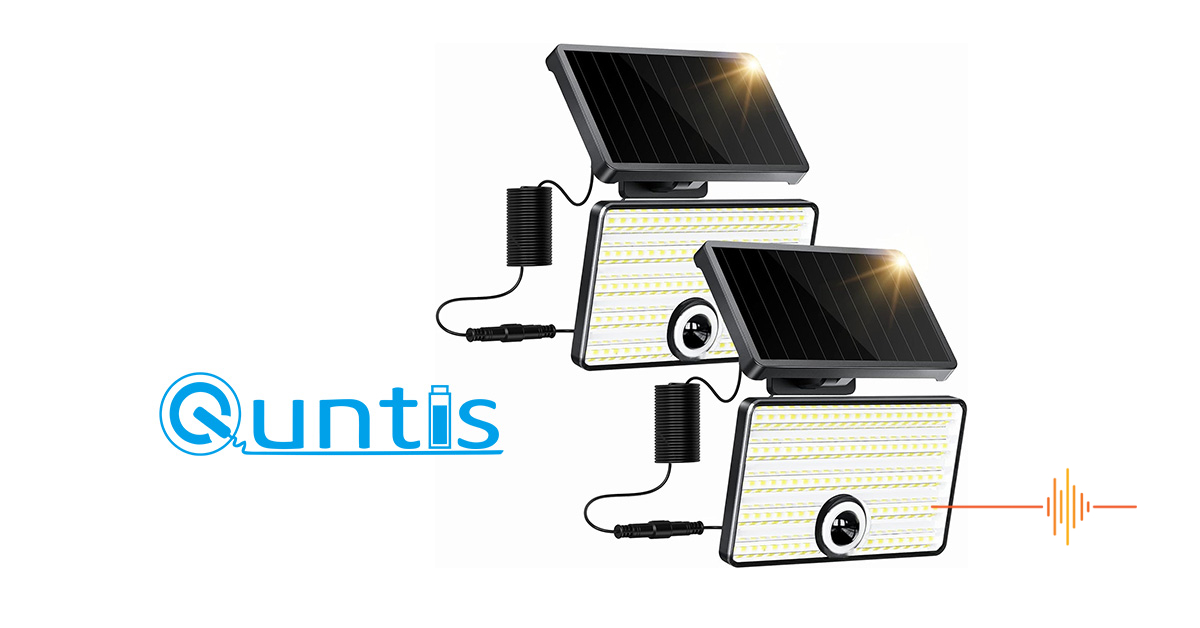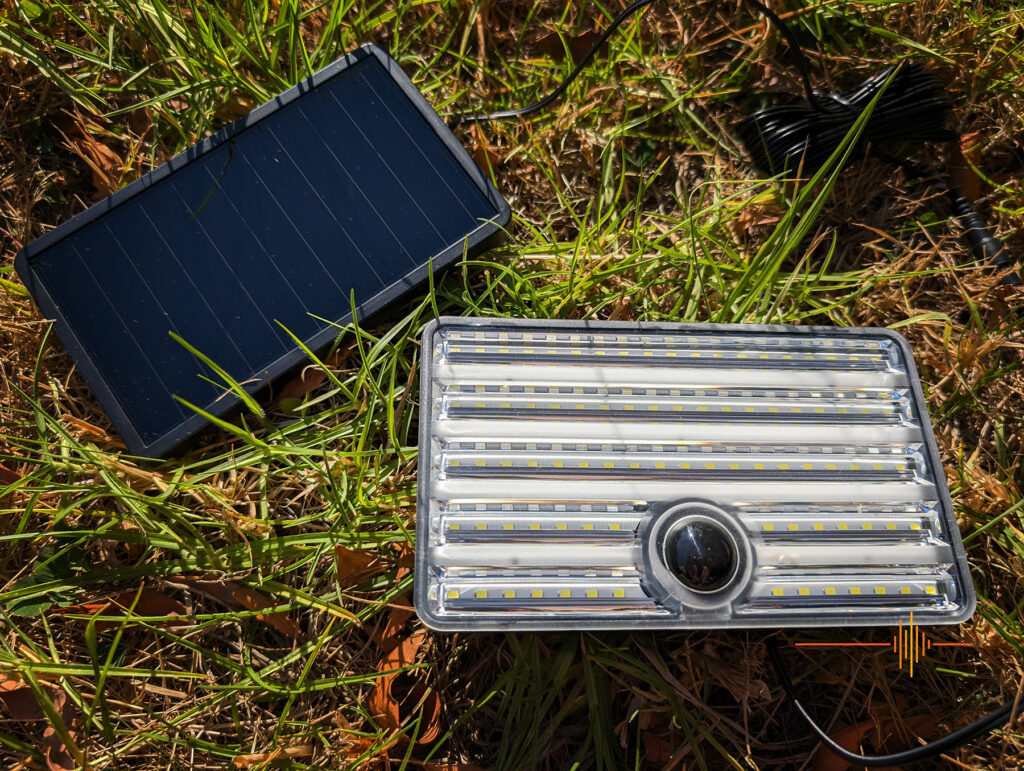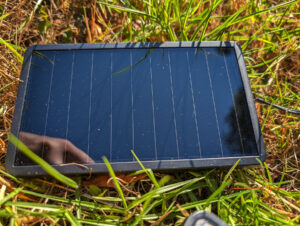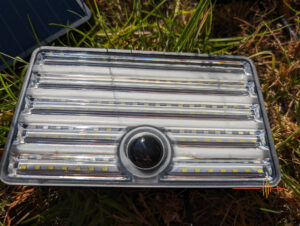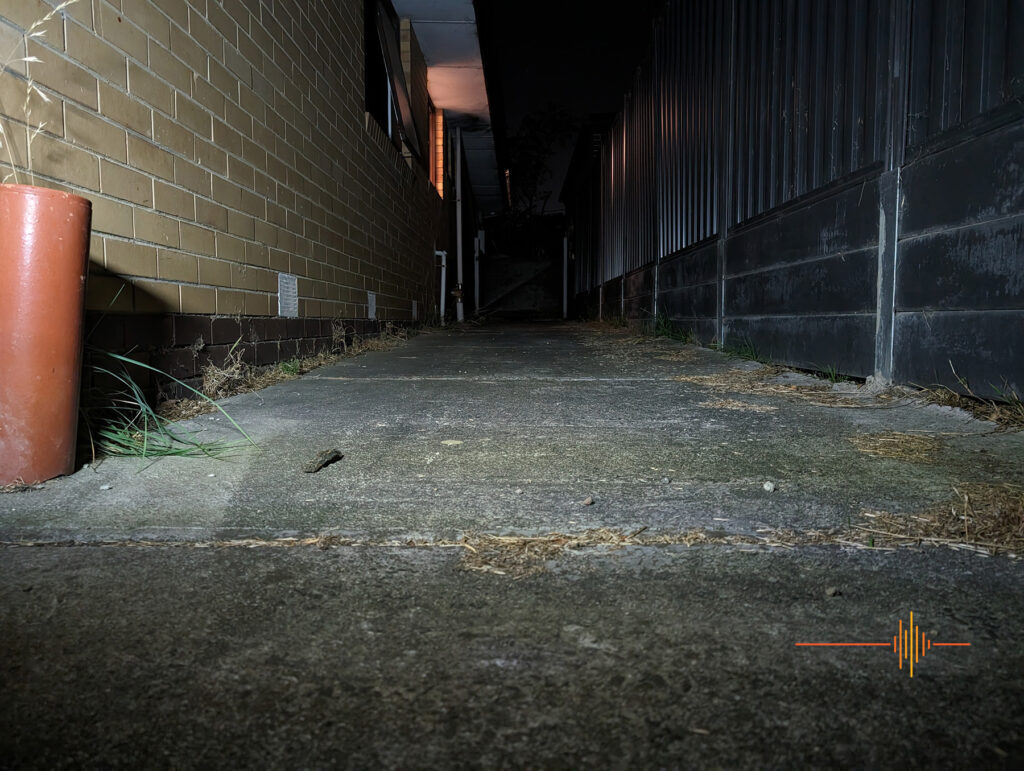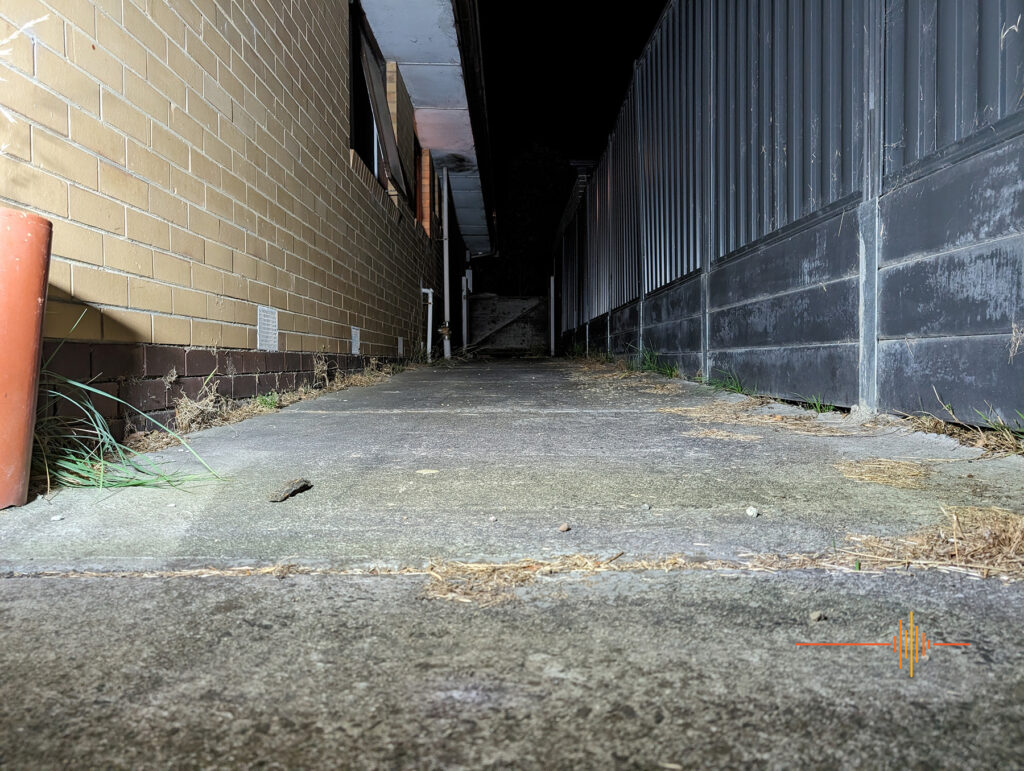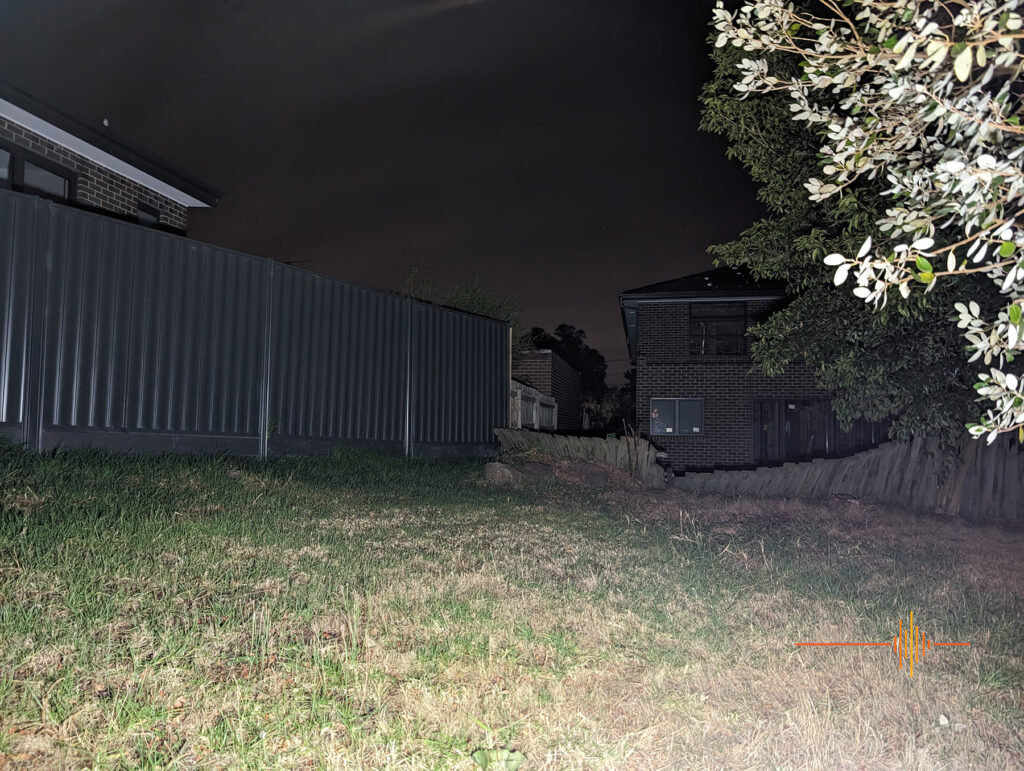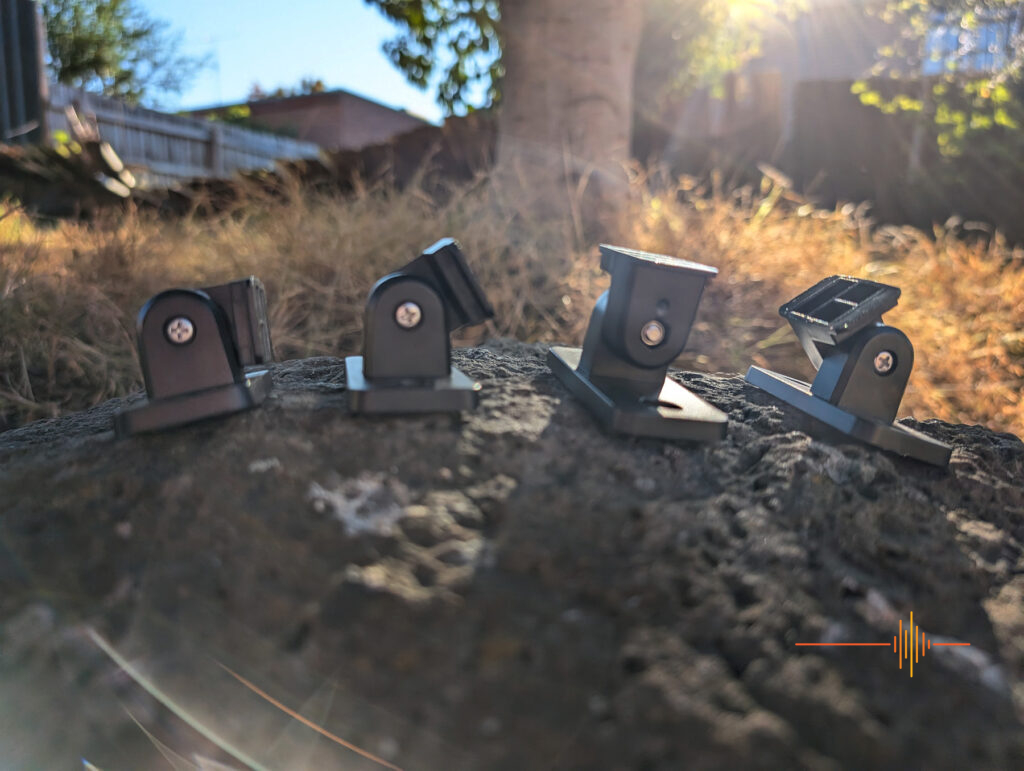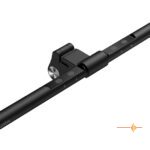Sometimes it is just not convenient or possible to run power to a light source, and this is where battery operated ones are so handy. What if you can have the best of both worlds – a light source that is powered by battery and does not need to be taken down for recharging? This is where the Quntis Solar Lights Outdoor Motion Sensor Lights come in handy.
First Impressions
The Solar Lights is not completely wire free, but it is kept to what is bare essentials.
The review unit came in a pair of lights and solar panels. Each light and panel is considered as one module. They come connected with 5 metres of wiring with a standard two-pin weatherproof joiner about 30cm from the LED panel side.
Separate to that is four wall mounting brackets – one for each component – two LED lights and two solar panels.
A passive infra-red (PIR) Motion Sensor adorns the front of each LED light module, and eighty-five LED beads makes up each light panel.
Around the back of the light panel is a single button that cycles through three lighting modes and then off.
In Use
As is necessary for an outdoor light, you want it to be weatherproof rated.
The Solar Lights comes with an IP65 rating. This means complete protection against ingress of dust and projection against jets of water from any direction. This is a distinction to sustained directed powerful jets or water and any definition of immersion.
Generally this is where I stop talking about IP ratings, but in this case it is relevant to go into a little more details.
The Solar Lights are weatherproof in the sense of it is able to withstand exposure to inclement weather – rain from any direction, and condensation.
The IP65 rating does not account for potentially damaging events such as lightning, hail, extended UV exposure, wind or flood. Let’s face it, you are going to need some serious material and design to withstand direct hits with golf ball size hail stones that we sometimes get.
If you intend to disconnect the plug for the installation, just take note to align the arrow markings when you reconnect the two ends and push it all the way in so it is seated properly.
So in terms of placement location, there is significant flexibility as to where you can put the LED panel, and separately the solar panel. As long as it is not likely to be in any standing water, you will be pretty ok. The dimensions are a shade under 160 x 90mm. The Solar Panel is under 10mm thick, the LED light side is the same except for the battery module which sticks out another 20mm.
To mount the modules is super simple. The bracket has two mounting holes, and a up/down swivel that can travel a full 180 degrees. Obviously the actual travel you will get out of it depends on where you mount the bracket. The panels, either the solar or LED, just slides in from the top onto the bracket and you are done. Simple.
Before you use the Solar Light, Quntis recommends turning it off and charge it under direct sunlight for one to two days before first use. I didn’t RTFM and also accidentally triggered the full brightness straight in my face. Good going there Kev!
Secondly, you want to be cleaning the solar panels once in a while with a damp cloth to maintain the performance of the panels. Dust and debris on the panels will reduce efficiency over time. We have all heard about the Mars rovers where they had issues with recharging their batteries via solar panels after a Martian dust storm … that is an issue for us still on Earth.
The three operating modes of the Solar Light are:
- Dim to Sensor Mode: light comes on at dusk by dim brightness (300 lumens), motion trigger will turn it to full brightness (3000 lumens) before returning to dim mode.
- Sensor mode: light triggered to full brightness when motion is detected at night, and turned off after delay
- On mode: Motion sensor disabled, light is automatically turned on from dusk to dawn at medium brightness
I thought a night time walk down the dark side of Starkiller Base, I mean my house, was the best spot I have to see how much range I can get out of the Solar Lights.
The full length of my house is a little over 17m but short of 17.5m. In the photos I have taken, the gate is located about 1.5m back from the front most wall of my place. There is a fuse box that is located about 0.75m in front of the gate from this perspective.
At dim brightness it casts enough light to see a third of that length with some spill to half the distance. You can see in the photo below that the short PVC pipe in about the center of the photo is lit up which is about halfway down that path.
At full brightness in the photo below, the gate is lit up and you can see the light coloured fuse box catching the light beyond the gate.
So at a finger in the air kind of measurement, at dim brightness it is covering about 5m and at full brightness we are looking at about 16.5m from the light source. That’s a pretty decent coverage.
The horizontal spread of the light is enough to fill this area which is just under 2m across.
Simple law of physics, I have light coloured bricks on the left and Colourbond fence on the right which is helping to fill the area with light and reflection.
Taking it to a wide open space I estimate the reach to be about 11m, with a spill to about 13m to reach my fence at the longest stretch. The angle of the horizontal spread is at around 110 degrees (Mark 1, Mod 0, Kevin’s eyeballs estimation). In open space the intensity of the light is noticeably less than in the more confined space I tested previously.
Looking at the specifications, the Solar Lights has a maximum output of 3000 lumens at 6500K. This is roughly equivalent to a:
- 150W incandescent globe, or
- 150W halogen globe, or
- 40W CFL globe
- 25-28W LED globe
Quntis claims a light reach of 12m which isn’t far off from my estimates and generally inline with the throw of 3000 lumens.
The PIR has a reach of 12m and 120 degrees so it is pretty decent coverage before the light is tripped.
Charging will take between 6 to 8 hours and the light will work for 6 to 10 hours.
Other Features
The battery has a 2000 mAh capacity, which unless you are going to be blasting the lights on full the entire night should be plenty to go the distance before sun comes up again.
Quntis claims a solar conversion efficiency rate of 20%, which is on the top end of the average commercial panels. The average accepted range ranges from 17% to 20%.
Gripes
Kind of petty, but it may be a deal breaker for some people. You can’t set the duration for the light to stay on. That is all preset from the factory to run for a few minutes when triggered.
The other complaint I have is the mounting bracket which only has one direction of travel. It’s up down only and not a gimbal so you need to mount the brackets for the light and solar panel in the direction you want to light up.
Conclusions
The Quntis Solar Lights Outdoor Motion Sensor Lights are handy for when you need to light an area without having to run power to it. It also means you save on electricity bills when it is running 100% off solar.
With a price tag of AUD$44.98 for a pair, these are actually exceptionally good value. You will need a few of them to light up a large area but at this price, it isn’t exactly breaking the piggy bank territory. You can get 5% off if you use this discount code 2HVDKS65.
DRN would like to thank Quntis for providing the review unit.


